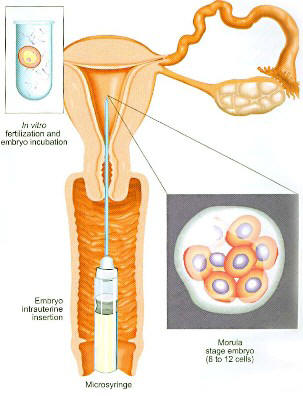Bed Rest After Embryo Transfer Beneficial or Harmful??
Embryo Transfer is the final and most critical step in an Assisted Reproductive cycle, strategies that improve success include avoidance of uterine contractility, using soft catheter, getting rid of cervical mucus and Ultrasound guided placement of embryo in mid cavity to optimize out comes.
Bed rest and immobilization after Embryo Transfer has been practiced for long with intention to improve pregnancy rate. However, studies didn’t s how any significant change in clinical pregnancy rate. Likewise, no difference was found in live birth, ongoing pregnancy rate, miscarriage rate, multiple pregnancy rate or implantation rate. findings showed that immediate mobilization after an Embryo Transfer doesn’t have negative influence over the success rate of IVF. Therefore, bed rest should not be recommended.
how any significant change in clinical pregnancy rate. Likewise, no difference was found in live birth, ongoing pregnancy rate, miscarriage rate, multiple pregnancy rate or implantation rate. findings showed that immediate mobilization after an Embryo Transfer doesn’t have negative influence over the success rate of IVF. Therefore, bed rest should not be recommended.
In fact, more recent studies have indicated that extended bed rest may contribute to negative outcomes, it was determined that bed rest and inactivity, combined with increased estrogen led to increased blood clot formation and insulin resistance. Ultimately, these blood clots may disturb the growth and development of the fetus by halting blood flow to uterus when it’s very much needed.
On the other hand, light activity increase blood flow, reduces inflammation, lower stress hormones and promotes healthy blood flow. These factors are associated with better fetal development and improved health for mother- to-be.
Normal activities after an Embryo Transfer should be resumed in general. However vigorous work out or activity that may cause discomfort (include heavy lifting and Jumping activities) should be avoided.
Avoid having intercourse afterwards since this may disturb the implantation of the embryo in the uterus. Avoid heat too, such as hot baths. However, a regular shower is permitted.
It’s important to follow any instruction provided by the medical team, as they know you and your fertility journey best and can give relevant advice for your specific situations.







 Pregnancy Due Date Calculator
Pregnancy Due Date Calculator
 Chinese Gender Predictor
Chinese Gender Predictor
 Ovulation Calculator
Ovulation Calculator
 IVF Due Date Calculator
IVF Due Date Calculator
